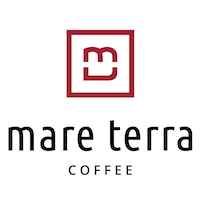Quality control
Mare Terra carries out an exhaustive quality control of our coffees starting from origin. Three types of cuppings of the same coffee are made and different controls of the wet and dry process are used, as well as of the different phases of the coffee rest:

First Cup
Source selection of freshly harvested coffee.

Pre-Shipment
The characteristics of each lot are evaluated. If they are approved, a shipping order is issued.

Arrival
The parameters of pre-shipment and arrival samples are checked and contrasted.
1. First Control Cupping
The coffee is cupped fresh, without resting, to evaluate the harvest profiles. The cupping takes place at origin and in our quality control laboratory at the Spanish Coffee Institute Foundation (IECafé).
2. Pre-shipment Cupping
Once the coffee has rested between 8 and 12 weeks (always depending on weather conditions), we proceed to cup it. In this cupping, the characteristics that we want from each lot are evaluated. Once checked, they are stored in wood silos and preserved in parchment until the arrival of the month of shipment. The shipment orders are then issued by stowing the container on the ship in a preferential place, free of drafts, sun and rain, to avoid condensation inside the container that may affect the coffee. For this matter, an internally lined container type is used, isolating the coffee from possible damages. It should be noted that no coffee is authorized to ship if the quality of the sample is not properly approved by our Quality Control Laboratory.
3. Arrival Cupping
The coffee arrives at the Barcelona Port where it is stored in a cool, dark and air-free place, previously enabled by our warehouse. At this point, the parameters obtained in the pre-shipment sample with the arrival sample are cupped again and verified.
Cupping Form
Our cupping form is based under the parameters of the SCA's official protocol. In the Cupping Form, we can find information regarding:
- Coffee Data: Date, country, region, farm, contract, harvest, quality.
- Coffee Description: Screen size and percentage breakdown, color, defects and their percentages, process and level of humidity.
- Roast: Sample roasting evaluation using the Agtron scale.
- Sensory Profile: The 10 essential organoleptic elements are evaluated with their respective scoring system, where the cupper objectively evaluates the coffee according to his/her criteria and experience. Every score is graphically expressed in a sensory diagram.
- Cupper comments: Detailed description of the cupper organoleptic impressions.
Sensory Profile Sheet
To facilitate and give greater practicality to the use of the information provided in the cupping form, we elaborate for our clients a Sensory Profile Sheet. This sheet reveals the most important information about coffee (country, region, farm, classification, variety, process, altitude, etc.), the cupper organoleptic impressions, the recommended use of coffee, final score and sensory diagram. It is also a public information on our website in the products section.
Traceability Sheet
We make sure we get the information from the source, which comes from and is produced directly by the producers with whom we work together. They let us know in detail, all the activities in which they intervene to develop sustainable agricultural practices. In the Traceability Sheet, we can find data of high relevance such as:
- History of the farm and the family that works the plantation
- Collaborators
- Harvest period
- Weed control
- Shade regulation
- Pest monitoring
- Efficient use of water sources
- Flora, fauna and nurseries
- Picking Process
- Coffee Milling
- Drying
- Storage
- Transport
- Other relevant information
This information is offered openly to our customers as part of the added value we offer them and according to the coffee in which they are interested. It is also a public information on our website in the products section.
The activities that are reflected in our Traceability Sheets are audited by Mare Terra through periodic visits, as well as constant communication with our producers, feedback on their progress and projects on the farms, being an active part of each of their achievements. In addition, most of the farms are certified, transferring the theoretical to the practical, giving even greater support to the Traceability we promote in our products.

